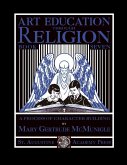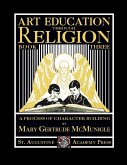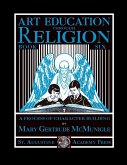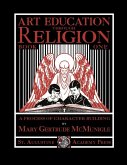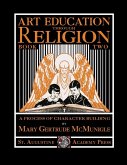Art Education Through Religion is a series of graded textbooks on art and industrial design developed in the late 1920s by Mary Gertrude McMunigle, who was Director of Art for the Diocese of Pittsburgh at the time. This endeavor was overseen by two priests: Rev. Paul E. Campbell, A.M. LitD, who was then superintendent of Parochial Schools for the Pittsburgh Diocese, and Rev. Raymond V. Kirk, A.B. PhD, Dean of the College of Education of Duquesne University. Yes, this art curriculum actually has an imprimatur! Each lesson aims to improve the student's appreciation and skill in art, while at the same time imparting both spiritual and character objectives. Therefore the use of this series trains not only the eye, but the whole person, including the intellect and will. Students gain knowledge, self-control, accuracy, reverence, helpfulness and good manners, as well as many other useful life skills. Book Eight provides abundant opportunities to practice the analysis of picture interpretation through line, color theory, and a new concept-texture. Symbolism and motive in creating designs is further explored and analyzed as the student learns to delve deeper into the underlying messages and meanings of art. Techniques and principles of perspective receive special attention, as well as the importance of proportion and balance in figure sketching. This is achieved in conjunction with the study of Renaissance art and architecture, as well as the liturgical year. **An important note**: though the levels were designed to correspond with grades one through eight, they work best as a system. If a student in the third grade or above begins to use this series for the first time, it is recommended that they begin at least one or two levels previous to their current grade level, and not later than level five. Many of the concepts introduced at the upper grade levels may prove frustrating to successfully master without the foundations laid in these earlier grades.
Bitte wählen Sie Ihr Anliegen aus.
Rechnungen
Retourenschein anfordern
Bestellstatus
Storno


